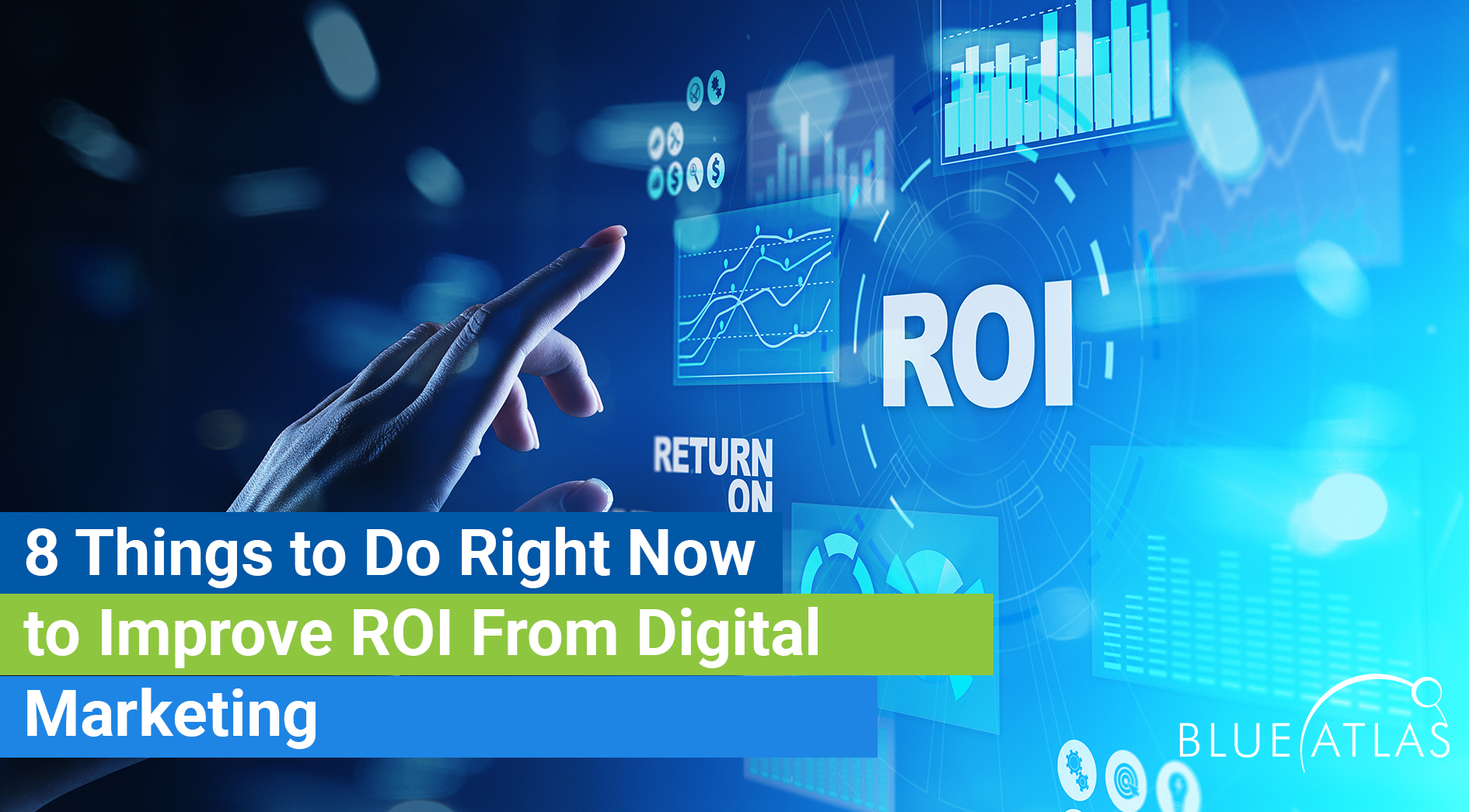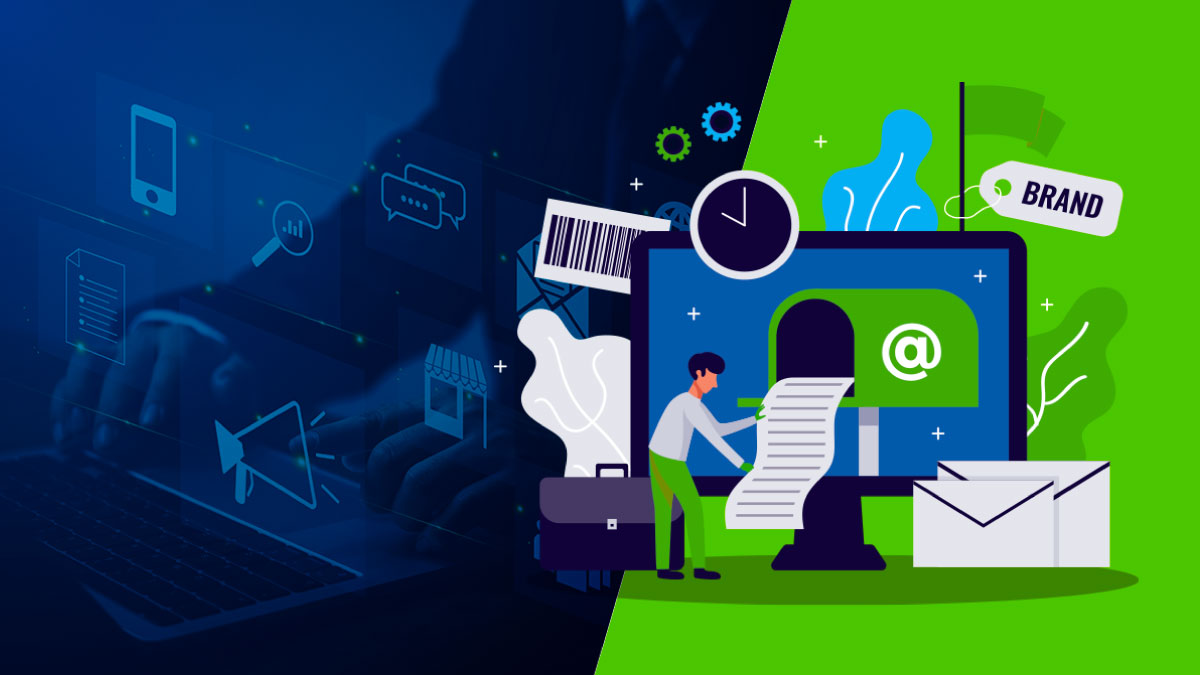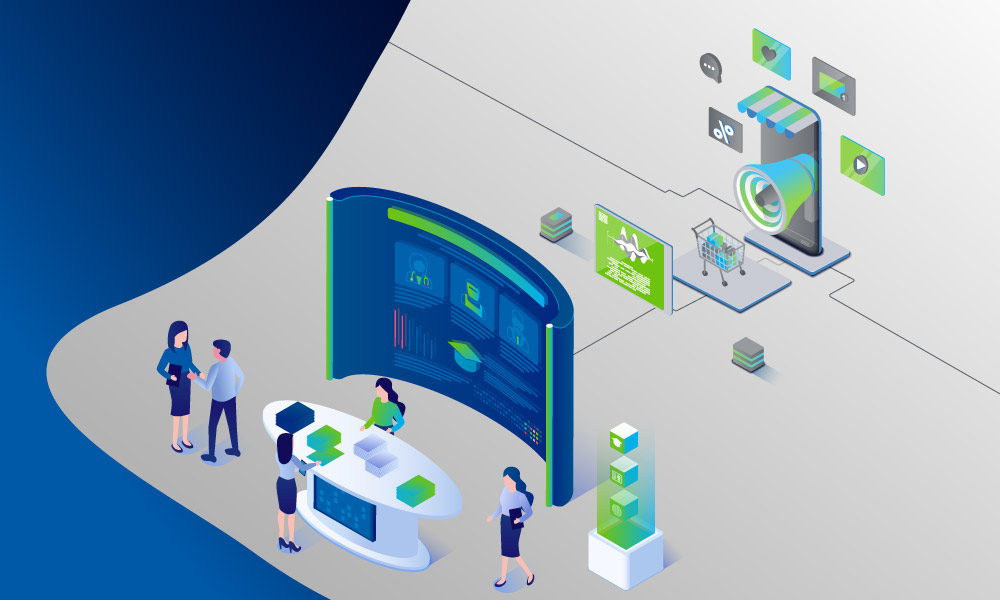Marketing Automation Trends in 2025

In a time when efficiency is key, marketing automation streamlines B2B operations. This technology not only simplifies marketing tasks but also enhances campaign impact across platforms. As we explore the shifting landscape of marketing automation, readers will uncover insights into how marketing automation software and these advancements can revolutionize their marketing strategies.
Expect real-world marketing automation examples and forward-looking strategies designed to enhance business processes and foster customer relationships.
Learn how embracing these marketing automation trends can positively impact your company in 2025.
Key Takeaways:
- Explore the benefits of incorporating marketing automation into your customer interactions to enhance engagement and retention rates.
- Familiarize yourself with the tools and techniques that can simplify your marketing procedures, such as managing media and nurturing leads, thereby saving time and resources.
- Discover how personalized and automated marketing approaches can directly boost conversion rates and yield a return on investment.
- Recognize the significance of embracing marketing automation trends to stay competitive in the ever-evolving B2B industry.
- Learn about utilizing analytics and artificial intelligence to tailor your marketing strategies precisely to meet your audience’s needs.
Top Marketing Automation Trends in 2025
Full-Funnel Omnichannel Marketing
Integrating all marketing channels marks a transformative step in enhancing the efficiency of customer journeys and improving conversion rates for industrial B2B companies.
This strategy, known as full funnel omnichannel marketing, ensures that every customer interaction is consistent across various platforms, from initial contact to post-purchase follow-ups.
Companies that adopt a robust omnichannel customer engagement strategy experience a remarkable retention rate. On average, these companies retain 89% of their customers, contrasting businesses’ 33% retention rate with weaker omnichannel strategy.
This statistic from Invesp highlights the critical role of cohesive marketing strategies in sustaining customer loyalty and driving business success.
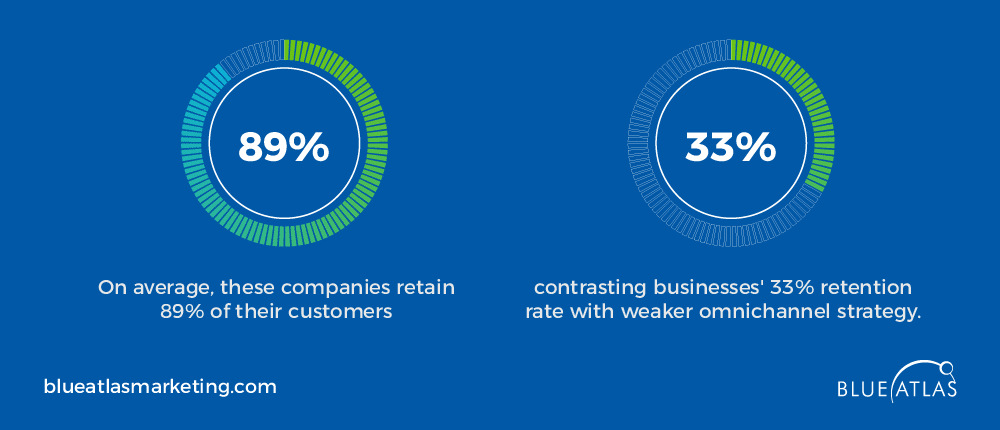
By coordinating marketing efforts across all media, businesses may create a seamless experience that meets modern consumers’ expectations for integrated interactions.
This method shortens the route to purchase and optimizes the whole marketing funnel, improving lead nurturing and conversion rates.
Generative AI in Content Creation
The advent of generative AI is revolutionizing content creation within marketing, offering unprecedented efficiency and innovation. This technology allows for the rapid generation of content that resonates with target audiences and adapts dynamically to emerging market trends and consumer preferences.
Collaborative Process
- Human Role: Marketers set the stage by defining the research scope, crafting compelling narratives, and pinpointing strategic goals. Their creative input ensures that the content aligns with brand values and connects emotionally with the audience.
- AI Role: Generative AI handles the heavy lifting of data management and pattern recognition. It synthesizes vast amounts of information, suggests relevant topics, and optimizes content for SEO, ensuring maximum reach and engagement.
AI’s role in creativity and strategy development illustrates this process. It uses predictive analytics to propose content strategies that are likely to succeed based on historical data and current trends. This speeds up the content creation process and enhances effectiveness by ensuring that all output is data-driven and aligned with audience needs.

This synergy between human creativity and AI’s analytical prowess transforms how B2B companies approach marketing, enabling them to produce high-quality, engaging content at scale. By integrating AI into their content creation workflows, businesses can maintain a competitive edge in a rapidly evolving digital landscape.
Personalized Content Marketing
The move towards customized content marketing transforms how industrial B2B firms engage with their audience. Prioritizing personalized content can significantly boost user interaction and happiness, leading to marketing campaigns that better connect with the intended audience.
An impressive 86% of B2B marketers now focus on 1:1 marketing, primarily through email. This shift highlights the increasing understanding of personalization’s importance in establishing customer relationships.
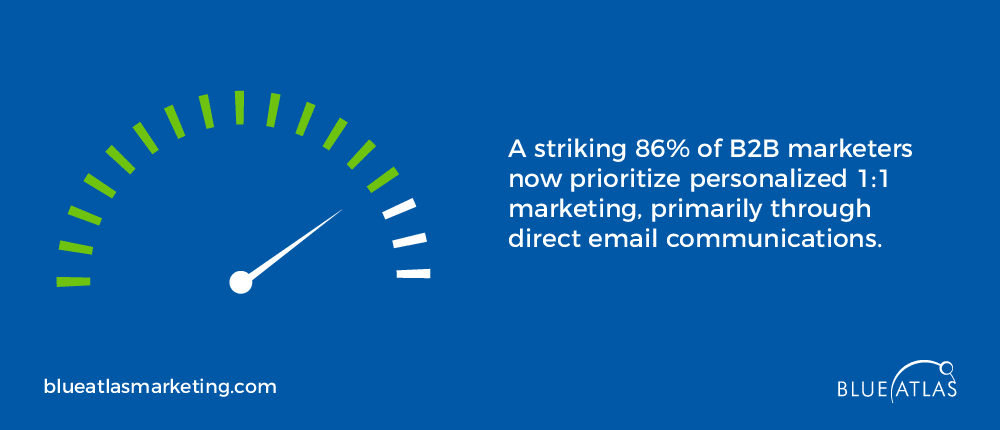
Demand Gen Report data demonstrates the need for individualized methods in modern marketing tactics. Personalization enables marketers to provide relevant and timely messages based on each prospect’s requirements and interests.
This strategy increases engagement rates since content directly addresses an audience’s needs and desires and is more likely to catch attention and prompt action. Marketers can now deliver content that feels personalized because of intelligent segmentation and data analysis, boosting overall customer satisfaction and loyalty.
Chatbots and Conversational Marketing
The use of chatbots in customer service and lead generation is on the rise within industrial B2B companies. These innovative conversational tools go beyond communication aids; they serve as assets that improve efficiency and enhance marketing strategies.
Chatbots enable interactions with potential clients through quick replies and personalized messaging, revolutionizing how businesses engage with their target audience. Each conversation now presents a chance to build connections and boost customer involvement.
According to Chat360, these bots play a crucial role in lead scoring, segmentation, and campaign management.
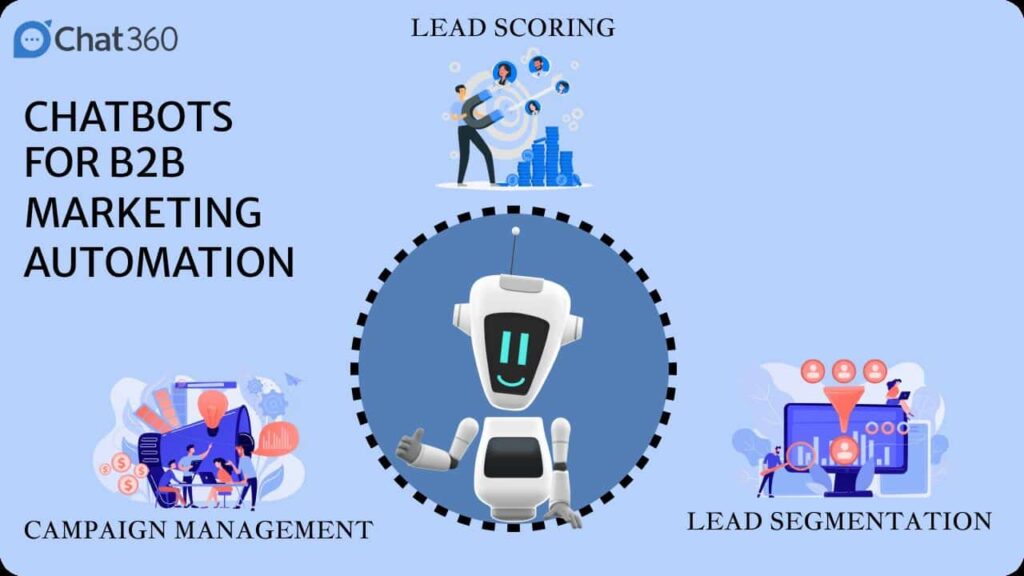
Chatbots reduce time and ensure that interactions are personalized to each customer’s demands, considerably increasing the efficiency of lead-generating operations.
Chatbot use in conversational marketing is part of a more significant trend in B2B marketing towards automation and personalization. These technologies enable firms to better engage with their markets and generate corporate growth.
Predictive AI for Customer Insights
Predictive AI is transforming the landscape of B2B marketing by allowing businesses to foresee client behavior with high accuracy.
This cutting-edge technology uses previous data and machine learning algorithms to forecast future customer behavior, improving targeting and personalization methods.
95% of businesses have implemented AI-powered predictive analytics in their marketing campaigns. This extensive usage demonstrates the tremendous benefit of predictive insights for understanding and predicting client demands.
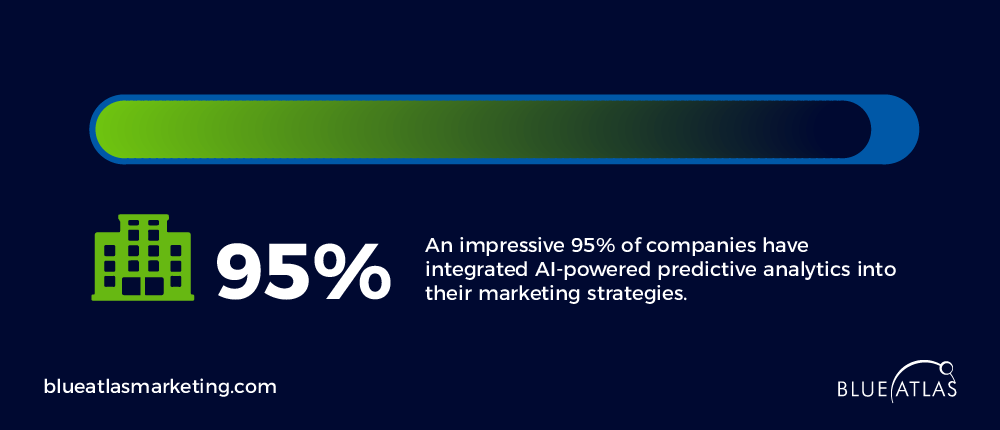
As highlighted in a report by VentureBeat, while the adoption is high, the challenge remains in leveraging these insights to make informed, data-driven decisions.
Using predictive AI assists in recognizing leads and opportunities, improving the precision of marketing campaigns to deliver tailored messages to the audience at the ideal moment.
By leveraging analytics, businesses can streamline their marketing endeavors, minimize resource wastage on less engaged prospects, and notably enhance conversion rates.
This tactical utilization of AI enables marketers to develop streamlined and successful marketing plans.
Automated Social Media Marketing
In the evolving world of marketing, automated tools play a crucial role in improving social media management and scheduling content.
These tools enable companies to uphold a presence that guarantees the effective and efficient delivery of their brand message on various platforms.
According to a survey, over 90% of marketers acknowledge the critical role of social media in fostering business growth. This perspective underscores the importance of leveraging automation to maximize the impact of social media strategies.

Automating social media marketing helps streamline content distribution and ensures that posts are sometimes shared for engagement. This strategic scheduling boosts the likelihood of connecting with the intended audience during peak activity, ultimately enhancing visibility and interaction.
By leveraging automation tools in media, marketers can allocate resources efficiently, freeing up time to focus on innovative and strategic responsibilities. Businesses can improve efficiency. Expand their social media efforts by automating routine tasks like posting content and analyzing data, significantly improving campaign performance and audience engagement.
Email Drip Campaigns
Email drip campaigns are a key component of digital marketing plans for B2B firms, particularly in guiding leads and increasing conversions.
These automated email marketing aims to provide prospects with content triggered by specific actions and behaviors, ensuring timely and personalized communication.
Marketo’s research illustrates the power of drip campaigns: B2B companies that implement them generate 50% more sales-qualified leads while reducing lead costs by 33%. This significant impact demonstrates how well-timed, targeted communications can enhance lead nurturing processes and drive conversion efficiency.
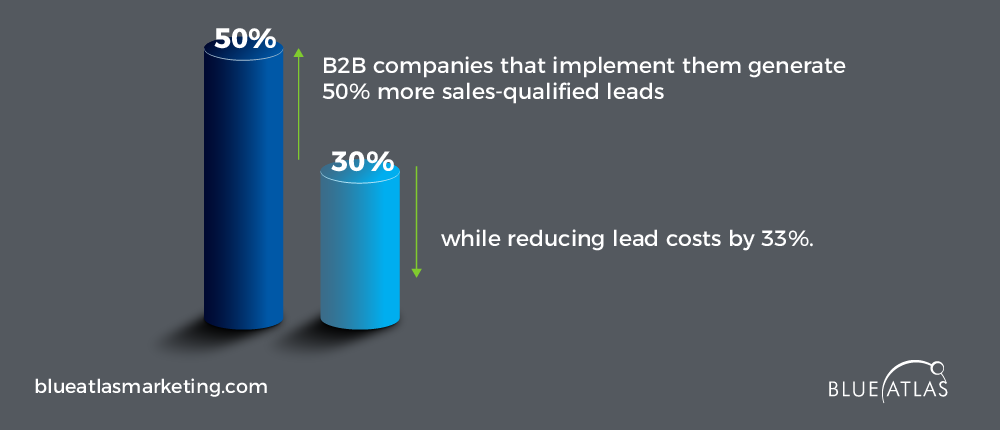
Automated drip campaigns allow for a high degree of personalization, critical in building relationships and moving prospects through the sales funnel.
By providing valuable content at each customer journey stage, these campaigns keep your brand top-of-mind, gently guiding potential customers toward purchasing. The strategic scheduling of email campaigns maximizes engagement without overwhelming recipients, thereby optimizing the chances of converting leads into loyal customers.
Review Management Automation
In today’s market, focusing on customers is essential. Businesses must handle reviews well to maintain a reputation and keep customers happy. Tools that automate this process help companies collect and manage feedback efficiently.
One useful tool in this area is the Customer Effort Score (CES) survey, which measures how easy it is for customers to interact with a company. For example, Nicereply offers a CES survey in which users’ rate how much effort it takes to engage with your business, such as requesting a feature or solving an issue.
This metric assists companies in understanding how customers view their service efforts and finding areas to enhance.
Here’s an example of such a survey demonstrating how easy it is for customers to share their feedback using this tool.
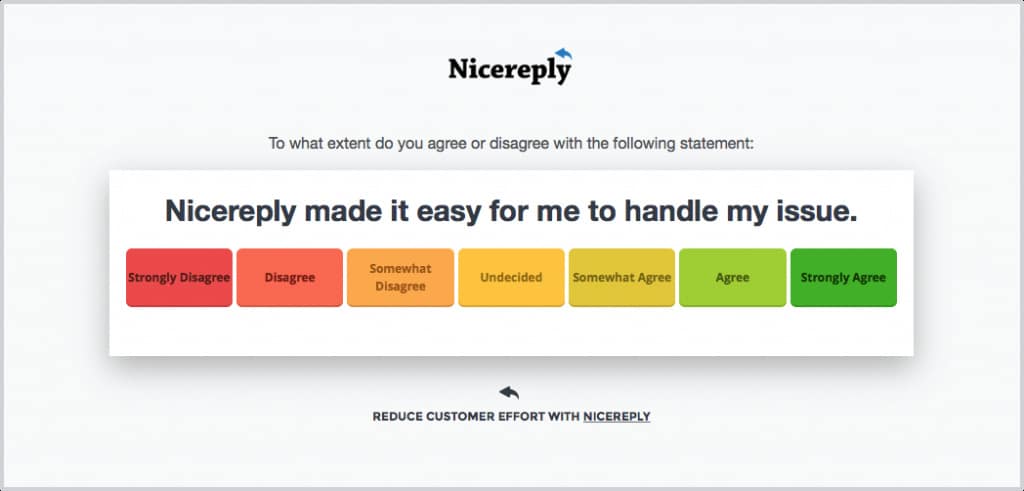
When the gathering and processing of consumer input is automated, businesses can respond to consumer requirements more quickly and efficiently, which raises customer satisfaction levels. Moreover, businesses can proactively address systemic issues, improving product quality and customer service, by examining patterns and prevalent issues mentioned in reviews.
CRM Data Reporting and Automation
Automating CRM data collection and analysis transforms how industrial B2B companies make strategic decisions.
By harnessing the power of automated tools, businesses can gather, analyze, and utilize customer data more efficiently, driving significant improvements in sales, service, and operations.
A study highlights the economic aspect of CRM automation, noting that while the initial costs of integration are substantial—averaging 3.5 times the annual license costs—the long-term benefits are undeniable. Companies that invest in extended CRM integration see productivity increases and experience a 20—to 30-percent growth in business.
This demonstrates a clear return on investment, as streamlined data processes contribute to enhanced decision-making and business expansion [NucleusResearch].
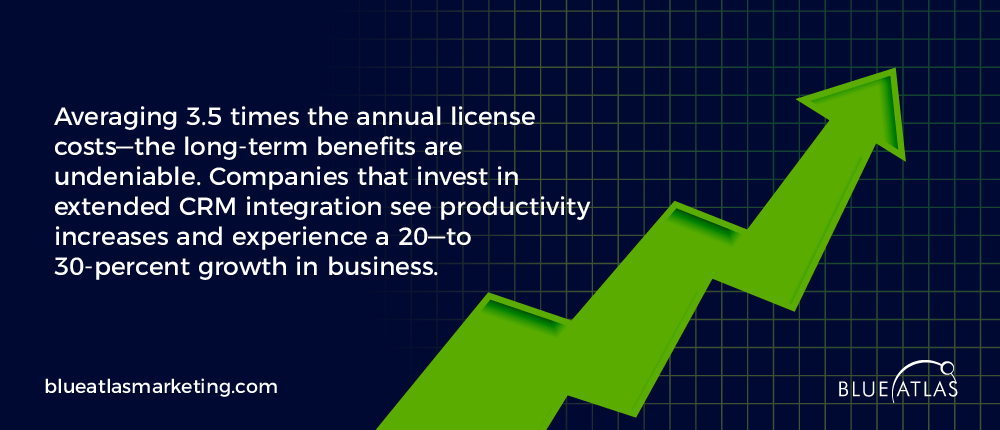
CRM automation enables businesses to track customer interactions, sales opportunities, and service requests in time, ensuring that the data is up-to-date and actionable. This functionality allows companies to spot trends, adapt strategies, and proactively meet customer needs promptly.
By automating reporting processes, organizations can cut down on data entry and analysis time, allowing them to concentrate on initiatives that promote growth and enhance customer satisfaction.
Mobile-First Marketing Strategies
As mobile usage continues to escalate, adopting mobile-first marketing strategies has become crucial for B2B companies aiming to stay competitive and relevant. This approach prioritizes the mobile experience in all marketing efforts, ensuring content, advertisements, and customer interactions are optimized for mobile devices.
Recent data underscores the significance of mobile optimization. In the last quarter of 2023, mobile devices generated 58.67 percent of global website traffic. This trend has steadily increased since 2017, emphasizing the enduring shift towards mobile dominance in digital consumption【Laura Ceci】.
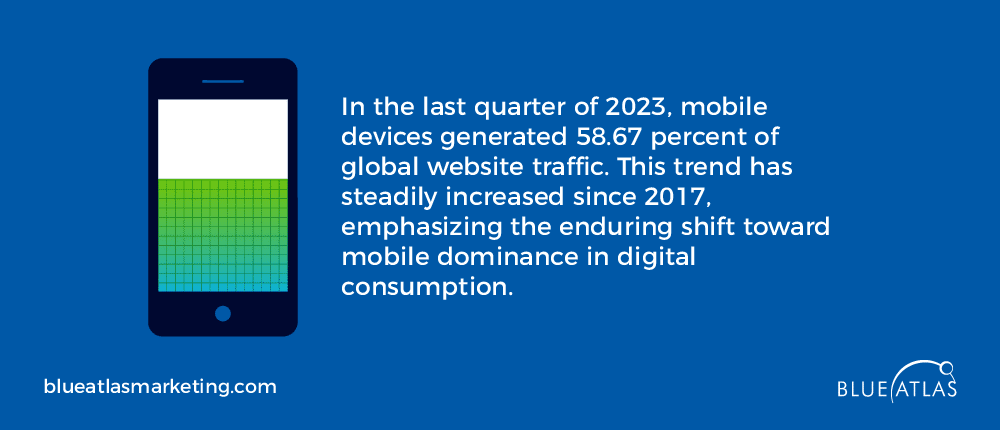
Developing an approach involves creating websites and emails that adjust well to mobile screens, using SMS and app-driven marketing to connect with customers on their smartphones, and adapting online ads for mobile viewing.
By prioritizing platforms, companies can engage with customers where they’re most active, boosting the impact of their marketing campaigns and enhancing user satisfaction.
This targeted strategy aligns with market practices and readies businesses for changes in consumer habits, establishing mobile-first marketing as a crucial component of contemporary digital strategy.
AI-Driven Copywriting
AI-powered text creation is changing the game in content production, greatly enhancing the quality and speed of creating copy for businesses.
Through the use of algorithms and machine learning, AI platforms can craft content that connects with readers while upholding a unified tone and manner across different types of content. This technology proves advantageous for writers striving to deliver top-notch, captivating content on a regular basis.
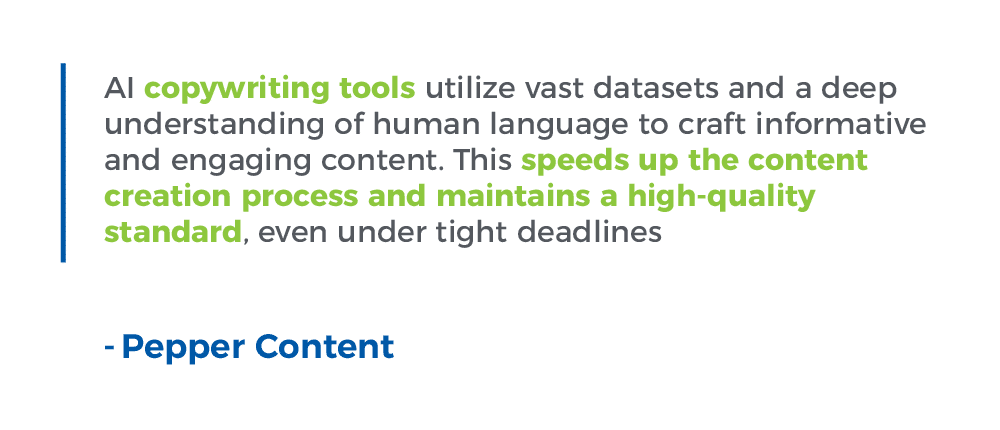
AI copywriting tools utilize vast datasets and a deep understanding of human language to craft informative and engaging content. This speeds up the content creation process and maintains a high-quality standard, even under tight deadlines. – Pepper Content
An example of AI’s impact is automated content generation tools, which help businesses scale their content marketing efforts without compromising quality.
These tools analyze existing content and audience data to produce tailored articles, blog posts, and advertising copy that effectively align with a company’s strategic goals.

By integrating AI into their copywriting processes, businesses can handle larger volumes of content demands, enhance the relevance of their messages, and engage more effectively with their target audiences, all while reducing the workload on human copywriters.
Behavioral Analytics for Marketing Automation
Behavior analysis plays a role in the development of marketing automation, especially in crafting personalized marketing strategies. This advanced method involves gathering, analyzing, and interpreting user behavior information to more effectively customize marketing efforts to preferences and requirements.
According to Vereigen Media, behavior analysis extends beyond data to encompass various interactions, such as website visits, engagement with content responses, emails, and social media engagements. This comprehensive data offers a picture of customer behaviors, empowering marketers to grasp the intricacies of how their audience engages with their brand.

Using this data allows companies to fine-tune their marketing messages and campaigns to match their target audience’s specific interests and behaviors, thereby increasing the relevance and effectiveness of their marketing initiatives.
By leveraging behavioral analytics, businesses can predict future behaviors, personalize customer experiences at scale, and ultimately drive higher engagement and conversions.
The graphic from Qualtrics visually emphasizes the detailed and layered process involved in behavioral analytics, showcasing its utility in enhancing customer understanding and marketing precision.
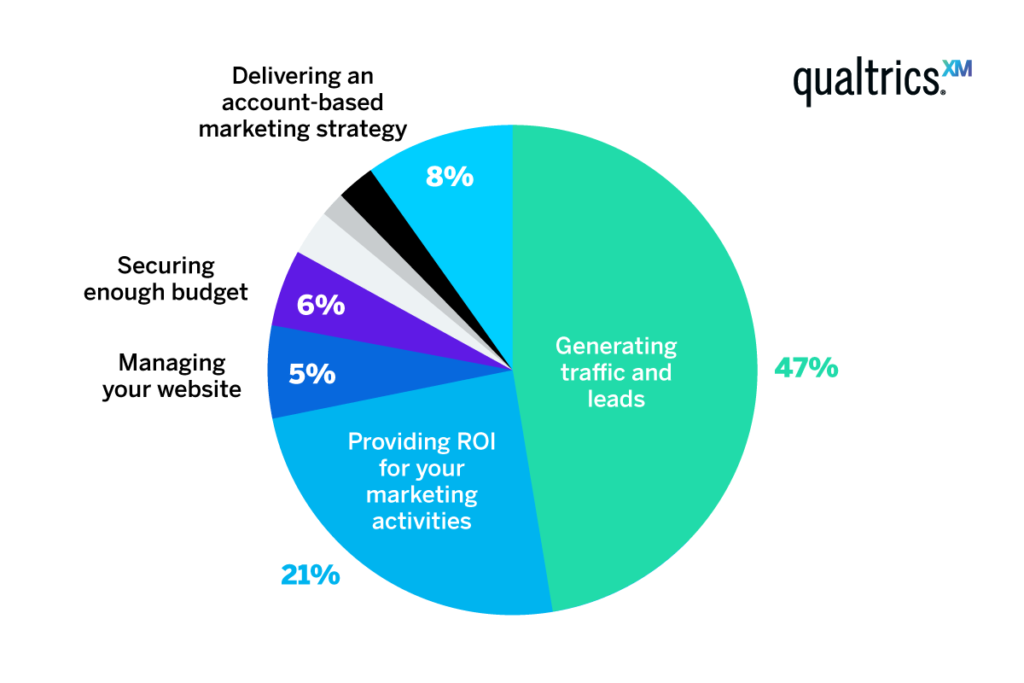
First-Party Data Utilization
The shift towards using first-party data strategically signifies a change in how businesses approach understanding their customers and adhering to privacy regulations.
With rules and increased consumer awareness regarding privacy concerns, leveraging first-party data emerges as a solution for upholding trust while gaining valuable insights. First-party data encompasses a range of information obtained directly from customers, including details, browsing habits, and purchase history.
This data is collected through engagements on company websites, social media platforms, and mobile applications. Such detailed data sources are acquired with companies’ consent to delve into customer preferences and behaviors without compromising privacy standards.
Intensify explanation underscores the alignment of first-party data with privacy laws presenting pertinent marketing information.
By utilizing this data, businesses can customize their marketing approaches with accuracy, thereby enhancing customer interactions and boosting engagement levels.
Furthermore, BrightCoves visual representation showcases types of data while highlighting the value and compliance advantages associated with first-party data.
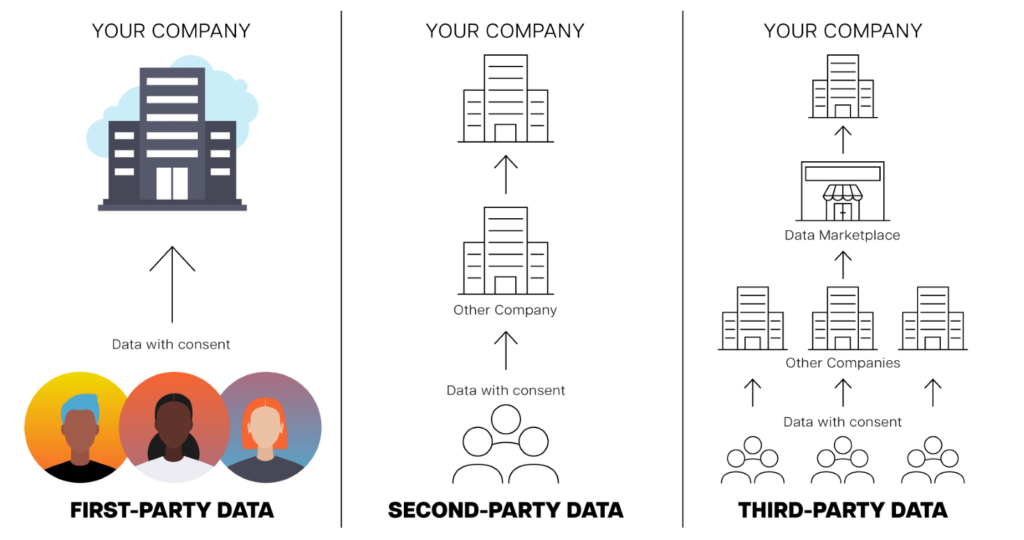
This shift helps businesses build a more robust data foundation and fosters a trust-based relationship with their customers, which is crucial in today’s data-sensitive environment.
Automation in Lead Capture
Automation technologies are transforming lead capture, greatly increasing the productivity and quality of leads collected by B2B businesses.
Businesses can streamline prospect information collecting by using intelligent tools like automated form builders and pop-ups while ensuring that the data is relevant and of high quality.
According to Jamie Pagan, Sender is a prime example of such technology, offering features like intelligent automation, segmented lists, and sophisticated form/pop-up builders. These tools optimize the user’s engagement process, making converting casual visitors into qualified leads easier.
Solutions effectiveness allows companies to quickly and efficiently expand their lead generation efforts requiring manual involvement.
The Sender illustration showcases how these automation features can seamlessly blend into a company’s website, showcasing the interaction between users and the automated system.
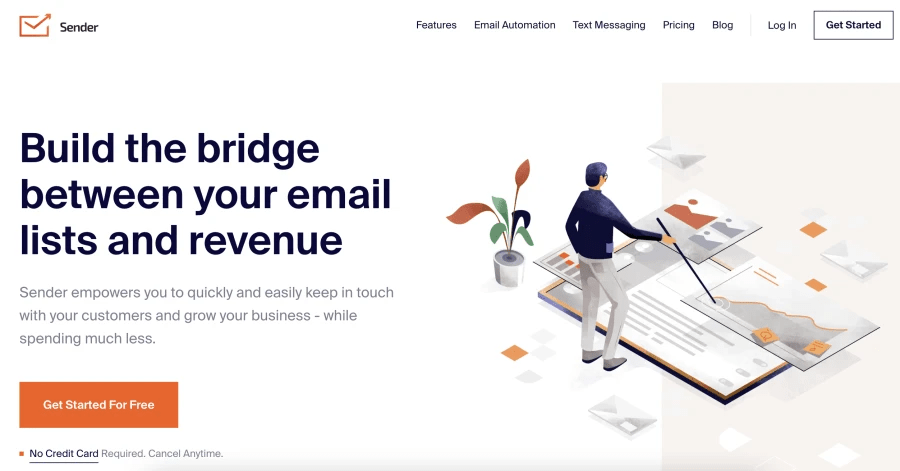
By automating the initial stages of lead capture, companies ensure that only the most relevant and engaged prospects are funneled into their sales pipeline, thereby improving the overall efficiency of their marketing efforts and accelerating revenue growth.
Marketing Funnel Automation
Automating the marketing funnel stages is pivotal for enhancing lead nurturing and boosting conversion rates.
This approach ensures that each stage of the customer journey—from awareness to decision—is optimized for efficiency and effectiveness, guiding prospects smoothly toward purchasing.
According to the article of Ty Heath, Director, Market Engagement, a key strategy in funnel automation is applying the “95-5 Rule,” as advocated by the B2B Institute.
This principle suggests focusing lead-generation efforts on the 5% of people actively seeking solutions—those who are “in-market” today. Simultaneously, it emphasizes the importance of casting a wider net through brand advertising aimed at the remaining 95%, preparing the ground for future engagement and sales.
The graphic from the B2B Institute depicts this strategy visually, illustrating how businesses should allocate their marketing efforts to capture immediate sales and build a foundation for long-term revenue growth.
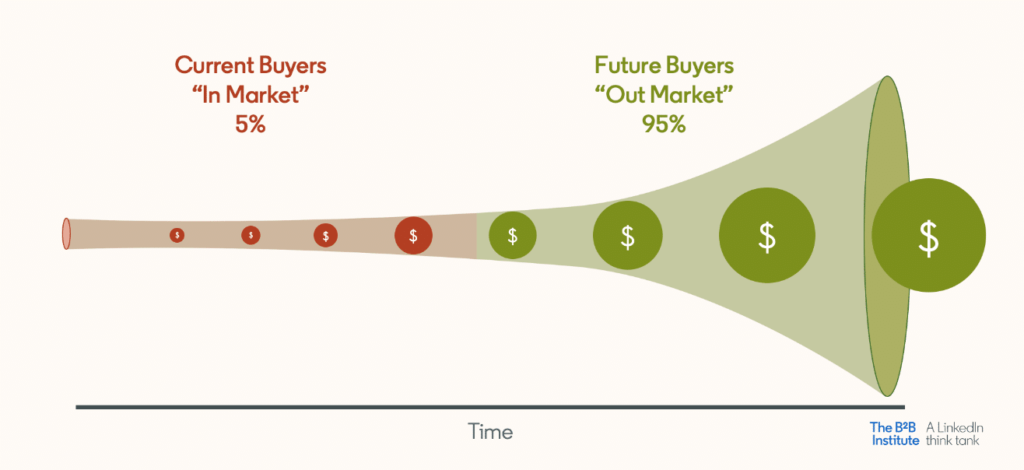
By streamlining this procedure, businesses can guarantee that their marketing resources are utilized efficiently, boosting ROI by matching their strategies with the purchasing readiness of their intended audience.
By automating the marketing funnel, companies can establish a data-informed method to engage with customers, leading to substantial enhancements in their marketing results while decreasing the need for manual work and supervision.
Exploring the latest developments in marketing automation can significantly boost the efficiency and effectiveness of your marketing teams. By leveraging a powerful marketing automation tool, you can enhance lead generation and enrich personalized interactions with customers, giving your business a competitive edge.
If you’re ready to harness these solutions to elevate your marketing initiatives and drive growth, Blue Atlas is here to help. Our expertise in implementing cutting-edge marketing automation techniques ensures your business not only meets but surpasses its marketing goals.
Contact us today to learn how we can streamline your operations and help you achieve outstanding results.
Frequently Asked Questions
Why should you embrace marketing automation trends?
Embracing marketing automation trends allows businesses to streamline operations, enhance customer interactions, and achieve scalable growth efficiently.
Is marketing automation a dying trend?
Far from dying, marketing automation is evolving and expanding, continually integrating new technologies to remain vital in digital marketing strategies.
How can I leverage marketing automation trends to improve customer retention in 2025?
In 2025, utilize personalized marketing campaigns, predictive analytics, and customer engagement tools within your automation strategy to significantly enhance customer satisfaction and retention.


